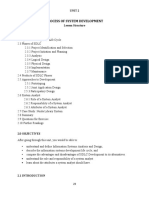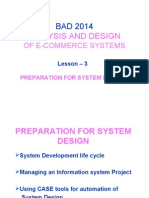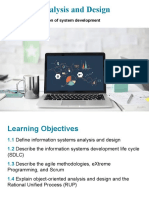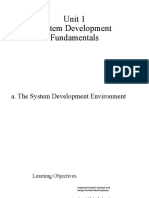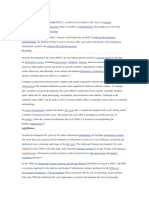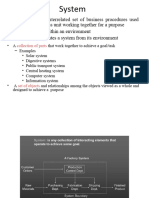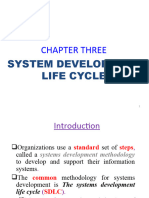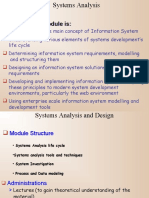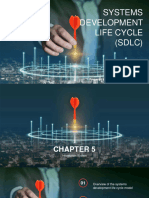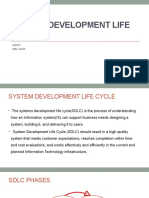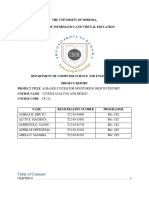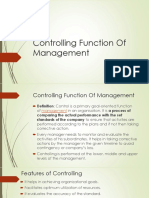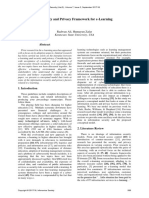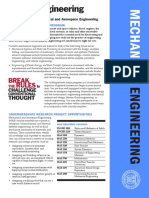0% found this document useful (0 votes)
61 views15 pagesNotes Form 3 System Life Cycle
The document outlines the System Development Life Cycle (SDLC), defining systems as collections of interrelated components and distinguishing between soft and hard systems. It details the stages of system development, from problem recognition to implementation, and emphasizes the importance of user involvement and feasibility studies. Additionally, it discusses the role of a system analyst and the reasons for developing new information systems.
Uploaded by
philtechsolutions7Copyright
© © All Rights Reserved
We take content rights seriously. If you suspect this is your content, claim it here.
Available Formats
Download as DOC, PDF, TXT or read online on Scribd
0% found this document useful (0 votes)
61 views15 pagesNotes Form 3 System Life Cycle
The document outlines the System Development Life Cycle (SDLC), defining systems as collections of interrelated components and distinguishing between soft and hard systems. It details the stages of system development, from problem recognition to implementation, and emphasizes the importance of user involvement and feasibility studies. Additionally, it discusses the role of a system analyst and the reasons for developing new information systems.
Uploaded by
philtechsolutions7Copyright
© © All Rights Reserved
We take content rights seriously. If you suspect this is your content, claim it here.
Available Formats
Download as DOC, PDF, TXT or read online on Scribd
/ 15






